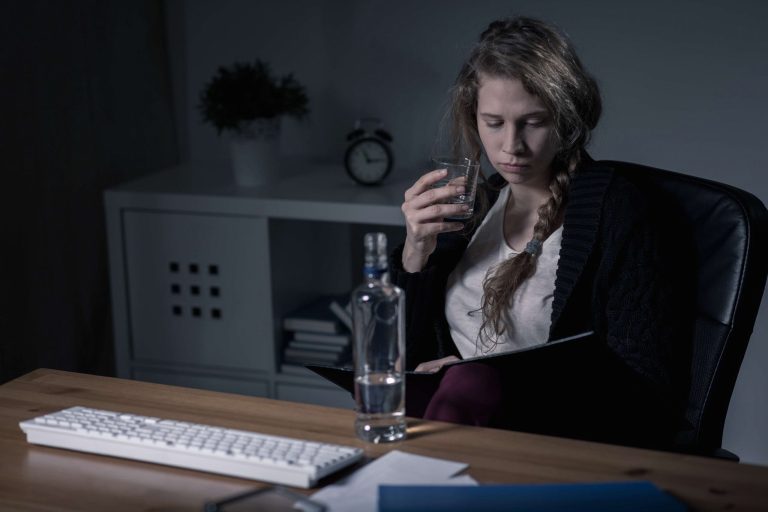These flashbacks are rarely as intense or long lasting as a typical drug-induced trip. You’ll be aware of the effects of the disturbances, but you likely will not enjoy the other effects of reliving a trip. As the flashbacks become more common, they can become frustrating, even overwhelming. Type 1 HPPD is typically experienced as brief, random “flashbacks.” On the other hand, type 2 HPPD is generally long term, disturbing, and pervasive. During some flashbacks, the sensation of reliving the trip or the effects of the drug is pleasant. Flashbacks usually subside on their own after the drug use has been discontinued, over the course of a few months, and most experts agree about the importance of abstaining from drug use for recovery.
Hallucinogen Persisting Perception Disorder: Etiology, Clinical Features, and Therapeutic Perspectives
His paper “When the Trip Doesn’t End” talks extensively of his journey, research, and theories for effective treatments. These are all symptoms of hallucinogen persisting perception disorder (HPPD), a treatable condition psychedelic substance use could trigger. The mental disorder affects a small percentage of people with a history of psychedelic drug use.
Type I patients often benefit https://rivierasuisse.asia/th/the-impact-of-alcohol-on-the-brain-neurobiology-of/ from reassurance and minimal intervention, while Type II cases require comprehensive management strategies. Research indicates that Type II HPPD affects approximately 4% of hallucinogen users, making it a rare but significant concern in psychiatric practice. The diagnosis of HPPD presents unique challenges for healthcare providers. Many medical professionals lack familiarity with the condition, leading to misdiagnosis or dismissal of symptoms. Patients often face skepticism from healthcare providers unfamiliar with HPPD, creating additional barriers to receiving appropriate treatment and support.
- The number of people with HPPD is low, and it’s more often diagnosed in those with a history of previous psychological issues or substance use.
- Early intervention can help manage symptoms and may prevent them from getting worse.
- He was also not using drugs for recreational purposes, despite having a social history of polysubstance use since he was 14, including LSD and cannabis.
- During an HPPD episode, colors may appear brighter, objects may appear an unusual size, or there may be halos of light around different objects.
Previous use of hallucinogens is necessary, but not sufficient, for diagnosis of HPPD, and the symptoms cannot be due to another medical condition. Many people with HPPD have co-occurring mental health conditions, especially anxiety disorders. The disturbing visual symptoms can cause fear and distress, which may lead to panic attacks, avoidance of certain situations or environments, and depression. Our finding that 63% of the patients who received pharmacotherapy had a positive outcome—with 30% achieving full remission—may be considered an antidote against therapeutic nihilism in the face of HPPD.
Type II HPPD
Instead, most of the treatment information available comes from individual case studies with HPPD patients. Persisting visuals after psychedelics remains an under-explored area of medicine, without a doubt. It is crucial to seek medical attention if HPPD symptoms significantly disrupt daily life or progressively worsen. Telemedicine offers a convenient way to consult healthcare providers from the comfort of your home. Our hppd telemedicine practice provides comprehensive care, including HPPD treatment options such as medication management and personalized lifestyle recommendations, without the need for in-person visits. Healthcare providers may perform psychiatric evaluations to distinguish between the two conditions.
How do I recognize the signs of hallucinogen persisting perception disorder?
There appears to be a correlation with previous mental health diagnoses. More than half of the survey’s respondents reported that they had previously struggled with anxiety, panic attacks, depression, post-traumatic stress disorder and other conditions. To establish the course of the HPPD symptoms described, we assessed the latency period between the substance use and the onset of the symptoms, their frequency and duration, and the outcome (with and without treatment). The latency period was documented in 59.8% of the cases, in which in 63.8% the symptoms started relatively early, i.e., immediately (29.3%), within a day (3.4%), or in less than a week (31%).

Track the entire psychedelic market using the only index that covers the entire psychedelics marketplace.

The patient also noted positive effects of psychotherapeutic intervention on attention focusing and mood stabilization. Not surprisingly, increased overall stress levels correlated with worsening of her symptoms. Dr. Locke emphasizes the importance of avoiding all hallucinogenic drugs, including even small doses or “micro-dosing” of psychedelics, as this can often worsen symptoms or trigger a relapse.

It can be a long journey back to the unaltered world, and some never make it. But an HPPD diagnosis does not necessarily mean being doomed to suffer from the disorder’s most disorienting and debilitating effects. The lack of awareness and understanding among medical professionals is a common complaint of those who suffer from HPPD. With research into the condition still in its infancy, the internet has filled a void for those seeking help. Since then, he’s struggled to find anyone who knows anything about HPPD.
- If you are experiencing persistent visual disturbances after using hallucinogens, it’s important to seek medical help for proper evaluation and management.
- When you come to Swift River, you’ll undergo a complete medical and psychiatric evaluation to ensure we understand all aspects of your health and recovery needs.
- Additionally, individuals with traumatic brain injuries (TBIs) or other neurological conditions may face an increased risk, as these issues can impair the brain’s ability to process sensory information effectively.
- Some experts believe a bad drug trip can inflict severe trauma that leaves people with a condition akin to PTSD.
They may also perform an electroencephalogram (EEG) to monitor your brain’s electrical activity. Getting an accurate diagnosis is crucial for finding the right treatment plan and support. Hallucinogen Persisting Perception Disorder (HPPD) is a complex neurological condition where individuals experience ongoing visual disturbances after using psychedelic substances. These visual alterations persist long after the drug’s Substance abuse effects should have worn off, creating significant challenges in daily life.
6. Second Line Medications
Although many people will see a reduction in symptoms over time, HPDD is still likely to be long-lasting and persist for many years. HPPD has been included in the DSM, the bible of psychological diagnoses, since 1987. However, it likely remains underdiagnosed, both because patients are reluctant to seek treatment and clinicians are uninformed about it.
HPPD conversely, is the continuous and often long term presence of disturbances in visual and sensory perceptions. The visual disturbances experienced, are understood as pseudo-hallucinations rather than the clinical view of hallucinations, as people with HPPD understand what they are experiencing. Sufferers know that their perceptions are a result of alterations in visual processing, as opposed to other mental illnesses whereby the sufferers are unable to discern what reality is. However, visual disturbances defined as HPPD also occur in people who have never used psychedelics or other drugs, especially those with anxiety disorders.
